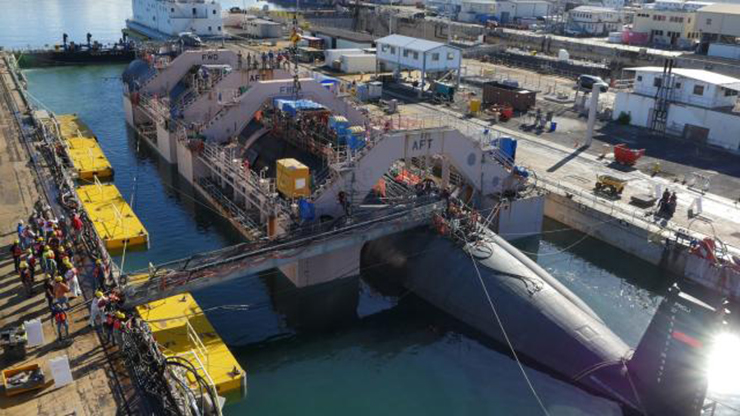
Washington: The US Navy’s three-star admiral in charge of fixing submarine maintenance delays says it will take four years to get the attack submarine fleet back to its proper state of readiness.
In May, the Navy had twice as many attack submarines tied up in maintenance than it should have according to its own plans, due to delays at public and private yards conducting maintenance and modernisation work. Sixty percent of the 50-boat fleet was available for operations, instead of the 80% goal set by the Navy.
About six months ago, then-Chief of Naval Operations Admiral Mike Gilday tapped Vice Admiral William Houston, the head of Naval Submarine Forces, as “the accountable officer for on-time delivery of submarines from public shipyards.”
While the operational availability rate has since risen to 66%, Houston said there’s much to do to reach the 80% goal by late fiscal 2027 or early fiscal 2028. Houston said his efforts fall into three main pillars: planning, material and execution.
In many cases, the reforms he’s putting into place are well-known best practices, but he said the Navy hasn’t rigidly followed them. Now, he’s hoping the enforcement of these practices, coupled with coordination among supporting commands, will allow for a better outcome from efforts meant to tackle submarine maintenance woes.
Houston said there are milestones built into the submarine maintenance availability planning period, but they’re not always adhered to. These milestones, if followed, ensure work packages are set early enough to allow for the right people and materials to be in place when a boat shows up at shipyards for work.
On the amount of work, Houston said the Los Angeles-class and Virginia-class subs have enough “engineering pedigree” that he’s comfortable skipping certain maintenance activity, or at least allowing the work to take place over a longer time period. And, he noted, there are some systems on submarines that sailors don’t use anymore, yet maintenance packages still call for routine work on these systems. Houston said his team has cut items from work orders as a result.
When it comes to outsourcing, Houston said the Navy farms out about 100,000 days of work across all four yards. This work could involve refurbishing valves and pumps, performing structural repairs, or anything else private companies have the expertise to do. Houston said he plans to double that to 200,000 days of work by FY26, freeing up shipyard staffs to do what they’re uniquely qualified to do: plan and manage complex repairs on a nuclear-powered boat, as well as conduct test and certification activities.
The Navy in its FY24 budget requested $2.4 billion over five years to try to flood the supply system with the necessary repair parts, which Houston said “will resolve a significant portion of the material challenges we face.”
The admiral noted it will take time for the parts to deliver, but in the meantime he holds meetings every Thursday afternoon to talk about materials with the Program Executive Office Attack Submarines, the Defence Logistics Agency, Naval Sea Systems Command’s logistics and engineering experts, shipyard commanders, and project supervisors for specific submarine availabilities.








